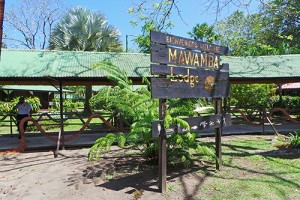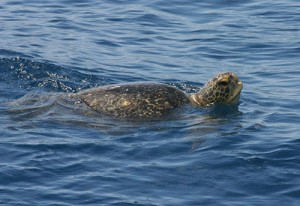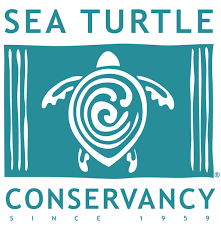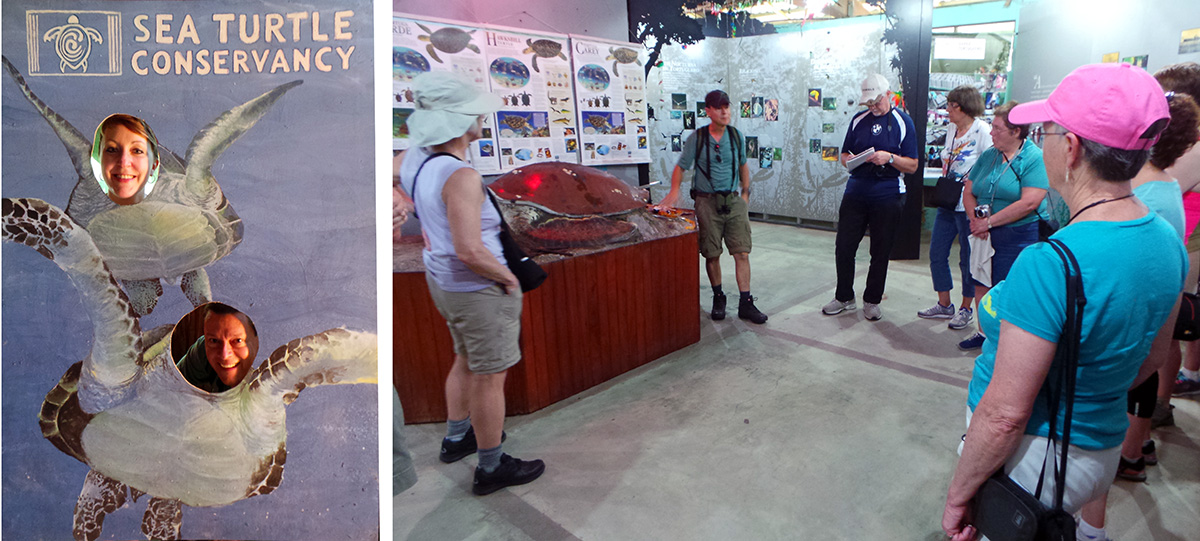On our first day of the 2016 MG tour of Costa Rica, we left the big city of San Jose up in the mountains of the central valley, drove across the Continental Divide, and down the Atlantic slope to the Caribbean lowlands. We went from the lush rainforest of Braulio Carrillo National Park at the top of the Central Volcanic Mountain Range down to open pasture, banana plantations – stopping briefly at the edge of one field to look at the plants and bagged fruits – and other agriculture on the flat lands, to eventually arrive at the landing spot for boat transportation to our lodge in Tortuguero.

Banana plantation (L), inflorescence (LC), flowers (RC), and bagged fruit (R).
This small town on the edge of one of the most remote and pristine parks in Costa Rica, Tortuguero National Park, is accessible only by boat or air. This coastal area of northern Costa Rica and adjacent Nicaragua is a low alluvial floodplain with permanent or seasonal swamp forests in the lowest and flattest areas. This was once an archipelago of volcanic islands until alluvial sediments from the interior mountains filled in the spaces and formed an extensive network of marshy islands interspersed by natural freshwater creeks, canals and lagoons, forming the flooded forest.
After we were settled in the long, flat boat our captain navigated the shallow water of the tidal canal, slowing to maneuver around submerged obstacles, and speeding up in straight spots. We plied the chocolate brown waters snaking through rainforest of stunted trees and tall palms.

The group in the boat (L) and heading through the brown water (R).
Huge raffia palms (Raphia taedigera) draped their long fronds in graceful arches nearly to the water in many places, with other interesting vegetation including many Heliconia pogonantha with pendant red inflorescences, white-flowered anthuriums, and tall trees sticking up way above the others. Around one curve after another we went in the narrow channel, with brown sandy banks in many places, until we arrived at the big Tortuguero River, and after negotiating a very shallow spot – it was at low tide – we zoomed off toward the village of Tortuguero. There was similar vegetation on this wide channel of muddy-looking water, but here we started passing docks of resorts, small homes, and a few of the long open boats the local use (as opposed to the covered boats for transporting tourists).

Raffia palms (L), blooming Heliconia pogonantha (C), and the Tortuguero River.

Entrance to Mawamba Lodge
We arrived at Mawamba Lodge about an hour later, situated on a narrow strip of land between the river and the ocean. We could just see – but definitely hear the roar of – the surf pounding on the beach just on the other side of the park-like plantings of the lodge. After lunch and a quick dip in the pool for some, we headed out on our afternoon excursion to town to visit the Sea Turtle Conservancy (STC).

A green sea turtle surfaces in the ocean.
A big attraction of Tortuguero for many people is the turtles. The coastal zone of the National Park, which has a sandy beach nearly 22 miles long, is the second largest green turtle (Chelonia midas) nesting beach in the world. Leatherback (Dermochelys coriacea) and hawksbill (Eretmochelys imbricata) turtles also nest on the beaches here. The nesting season for green and hawksbill turtle’ runs from July to October with the peak in August, while the leatherbacks nest from February to April. The females come up on the beaches at night to lay eggs well above the high tide mark. The eggs incubate in the warm sand for 7 to 10 weeks before hatching. After the hatchlings dig their way to the surface they have to run across the beach to the surf, usually under the cover of darkness. A guide is required to visit the beaches at night (no one is allowed on the beach unaccompanied after 6:00 pm).
 STC is the world’s oldest sea turtle research and conservation group founded in 1959 by world-renowned sea turtle expert Dr. Archie Carr to save sea turtles from eminent extinction through rigorous science-based conservation. The organization, headquartered in Florida, carries out worldwide programs to conserve and recover sea turtle populations through research, education, advocacy and protection of the natural habitats upon which depend upon. STC focused on sea turtles for its conservation efforts in part because these ancient creatures are among the most important indicators of the health of the world’s marine and coastal ecosystems. We learned about these animals, the importance of Tortuguero as a nesting site, and how the attitude of the locals has changed from using the turtles for food and other destructive uses, to conserving them as part of their natural heritage and basis for ecotourism.
STC is the world’s oldest sea turtle research and conservation group founded in 1959 by world-renowned sea turtle expert Dr. Archie Carr to save sea turtles from eminent extinction through rigorous science-based conservation. The organization, headquartered in Florida, carries out worldwide programs to conserve and recover sea turtle populations through research, education, advocacy and protection of the natural habitats upon which depend upon. STC focused on sea turtles for its conservation efforts in part because these ancient creatures are among the most important indicators of the health of the world’s marine and coastal ecosystems. We learned about these animals, the importance of Tortuguero as a nesting site, and how the attitude of the locals has changed from using the turtles for food and other destructive uses, to conserving them as part of their natural heritage and basis for ecotourism.

Kari and Gustavo impersonate sea turtles (L); guide Gustavo tells the group about sea turtles (R).
After that we took the sandy trail just off the beach to the small village of Tortuguero, walking the one main street – with a tiny church, rustic police station, a little grocery store and a number of small souvenir shops – admiring the various ornamental plants growing there before returning to the lodge.

The village of Tortuguero (L); Bixa orellana (achiote or annato) with pink flowers, red seed pods and dried brown seed pods (C); and flowering Clerodendrum paniculata (R).
